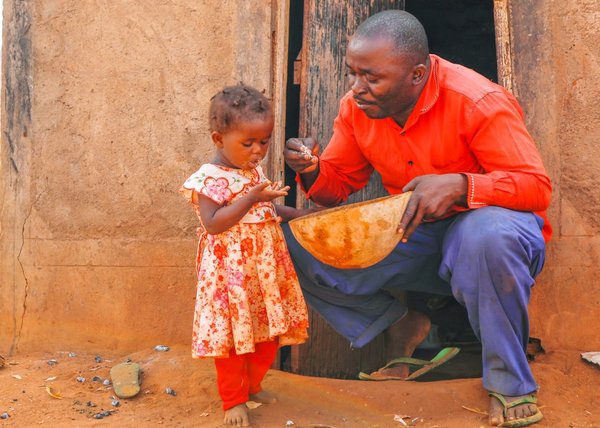 Read this article in French
Read this article in French- Share this article
- Subscribe to our newsletter
Finger millet genome breakthrough to help safeguard food security
The study opens exciting possibilities for developing new finger millet varieties through targeted breeding techniques to enhance nutritional value, yield and resilience to various challenges.
The breakthrough provides a detailed understanding of finger millet's genetic structure, specifically at the chromosome level (a structure found within the cells of living organisms that carries genetic information). The findings were published in the scientific journal Nature Communications on June 21st, 2023.
Finger millet, a crucial crop for ensuring food security, is cultivated extensively in Eastern Africa, India and Nepal. In recent years, there has been a renewed interest in finger millet due to its remarkable ability to withstand challenging climate conditions and the recognition of its highly nutritious grain.
Although traditionally considered a low-income, subsistence crop, finger millet is gaining prominence for its resilience and nutritional value.
“We are excited about the potential of this high-quality genome assembly as well as other genetic and genomic resources that we are developing to unravel the genetics of traits that are key to the yield and nutritional improvement of finger millet,” said Dr Katrien M Devos, the lead author of the study at the University of Georgia, USA.
Finger millet a neglected crop in Eastern Africa
For a long time, finger millet has been neglected in Eastern African agricultural systems owing to global political influences and government policies favouring other cereals. It is mostly grown as a backup crop rather than staple food, resulting in low yields and limited genetic improvement.
Challenges in breeding finger millet, such as its inbreeding nature and difficulties in crossbreeding, have further hindered progress. Although crossbreeding has been practised since the 1950s in India and, more recently, in eastern Africa, there has been a lack of genetic and trait information necessary for effective breeding.
Speaking on the breakthrough, Director General of ICRISAT Dr Jacqueline Hughes said that decoding the genetic structure of finger millet held the key to unlocking better breeding outcomes, paving the way for enhanced food security in the drylands."By understanding finger millet's genetic makeup, we can develop improved varieties that are more climate-resilient, productive, and nutritious, ultimately empowering communities in dryland regions to overcome food security challenges," said Hughes.
In technical terms, the new publication reports the generation of a high-quality genome assembly of finger millet, the population structure of a finger millet germplasm collection from across the finger millet growing regions of Africa and South Asia, and the application of the sequence information to identify a candidate gene for a quantitative trait locus (QTL) for anthocyanin production in the stigma and anthers.
“These advancements will enable the identification of key genetic elements associated with target traits, ultimately leading to speedier development of improved finger millet varieties that are resilient, high-yielding and nutritionally superior,” said Dr Sean Mayes, Global Research Program Director, Accelerated Crop Improvement, ICRISAT.
(ICRISAT/wi)
Reference:
Katrien M. Devon, Peng Qi, Damaris A. Odemy et al.: Genome analyses reveal population structure and a purple stigma color gene candidate in finger millet; Nature communication, June 2023





Add a comment
Be the First to Comment